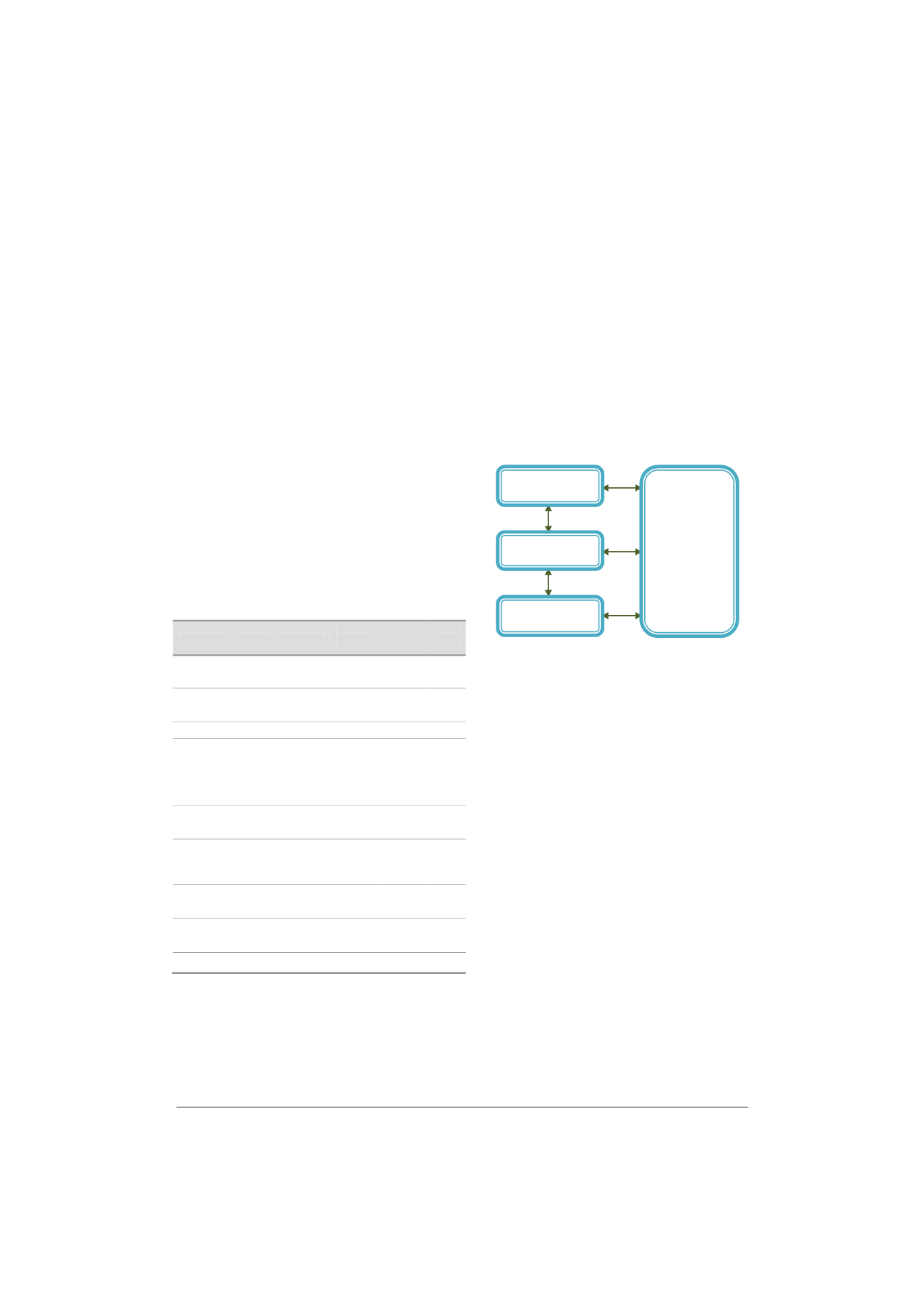
2011 International Conference on Alternative Energy in Developing Countries and Emerging Economies
- 146 -
As presented in Table 2, it can be seen that the
biomass has high potential to be utilized as renewable
energy. Main agriculture residues are highest energy
potential. It consists of rice husk, straw, bagasse, palm oil
waste, wood waste, etc. Some parts of these wastes are
currently used as fuel in power generation such as paddy
husk, which is burned to produce steam for propelling
turbines in rice mills; fiber and shell, empty fruit bunches
(EFB) in palm oil mills, bagasse in sugar mills are
directly combusted to produce steam and used by the
turbine as well as an exhausted steam was also used in
process heat. Rubber wood wastes are burnt to produce
hot water using boiler and heat exchange or steam for
drying. Nowadays, biomass can be used efficiently to
generate electricity, heat, and liquid fuel for vehicles. At
present, there are four major sources of biomass in
Thailand, i.e., rice, oil palm, wood and sugar cane, which
yield a total potential of 98 Mt, as shown in Table 3. The
biomass from sugar cane was 73.5 Mt, the energy of
bagasses and leaves was 97.2 MW, and 79 MW,
respectively. The biomass from rice was 29.9 Mt. Rice
husk and rice straw are mainly used to generate electricity
in Thailand. The heating values of these two types of
residue were assumed to be 15.5 MJ/kg on a dry basis.
The energy of rice husk and straw was 2.5 MW and 152.3
MW, respectively.
TABLE
III
B
IOMASS
P
OTENTIAL IN
T
HAILAND
(2003/2004)
Type
Yield
(million
ton)
Biomass
Quantity
(million
ton)
HV
(MJ/kg)
Electri
city
(MW)
Sugar
Cane
73.5
Bagasse
22.1
16.21
97.2
Leaf
17.6
16.42
79
Rice
29.9
Rice husk
6.9
15.56.
2.5
Straw
35.6
15.51
152.3
Corn
4.2
Corncob
0.8
16.63
3.7
Oil Palm
9.3
EFB
2.1
19.41
10.2
Fiber
1.4
19.94
7.5
Shell
0.5
21.13
3.1
Stalk
2.5
17.87
0.5
Cassava
25.1
Trunk
0.3
13.38
1
Rhizome
0.2
10.61
0.6
Rubber
Wood
3.2
Saw Dust
0.9
16.65
0.3
Wood
Bits
0.3
16.85
1.3
Eucalyptus
6.8
Firewood
1.3
16.85
6.2
Bark
0.7
17.30
3.1
Wood
Forest
6.0
wood bits
0.6
16.85
2.6
Total
158.04
98.1
363.4
Source: Department of Alternative Energy Development and Efficiency,
Ministry of Energy [1]
The emission from electricity generation sector is still
a subject of great debate, and the use of biomass for
energy may contribute significantly to the environmental
impact if the life cycle or the entire process is considered.
The use of biomass in a cleaner way should be assessed
from an environmental life cycle perspective. Thus, life
cycle assessment or LCA is used as an efficient tool for
evaluating the environmental impact entire the life cycle
of the biomass gasified power plant.
III. M
ATERIAL AND
M
ETHOD
The International Organization for Standardization
(ISO) has developed the international standards that
describe how to conduct an LCA (ISO 14040 series) [4].
LCA is a study of the environmental aspects and impacts
potential throughout a product’s life from raw material
acquisition through production, use, and disposal. The
methodology developed in this study is based on LCA.
This methodology consists of four major steps as shown
in Fig 1.
Fig. 1. Phases of Life Cycle Assessment.
A. Goal Definition
First step is the goal and scope. It includes the
definition of a reference unit: all the inputs and outputs
are related to this reference, which is called the
“functional unit”.
The goal and scope should address the
overall approach used to establish the system boundaries.
The system boundary determines which unit processes
are included in the LCA and must reflect the goal of the
study. This provides a clear, full and definitive
description of the product or service being investigated,
and also enables subsequent results to be interpreted
correctly.
B. Life Cycle Inventory
The second step is an inventory analysis. This is based
primarily on systems analysis, treating the process chain
as a sequence of subsystems that exchange inputs and
outputs. Hence, in LCI, the product system is defined,
which includes setting the system boundaries, designing
the flow diagrams with unit processes, collecting the data
for each of these processes, and ascertaining which
emissions will occur.
The inventory involves data collection and modeling
of the product system, as
well as description and
verification of data. This encompasses all data related to
environmental (e.g., CO
2
) and technical development.
Goal and Scope
Definition
Inventory
Analysis
Impact
Assessment
Interpretation


